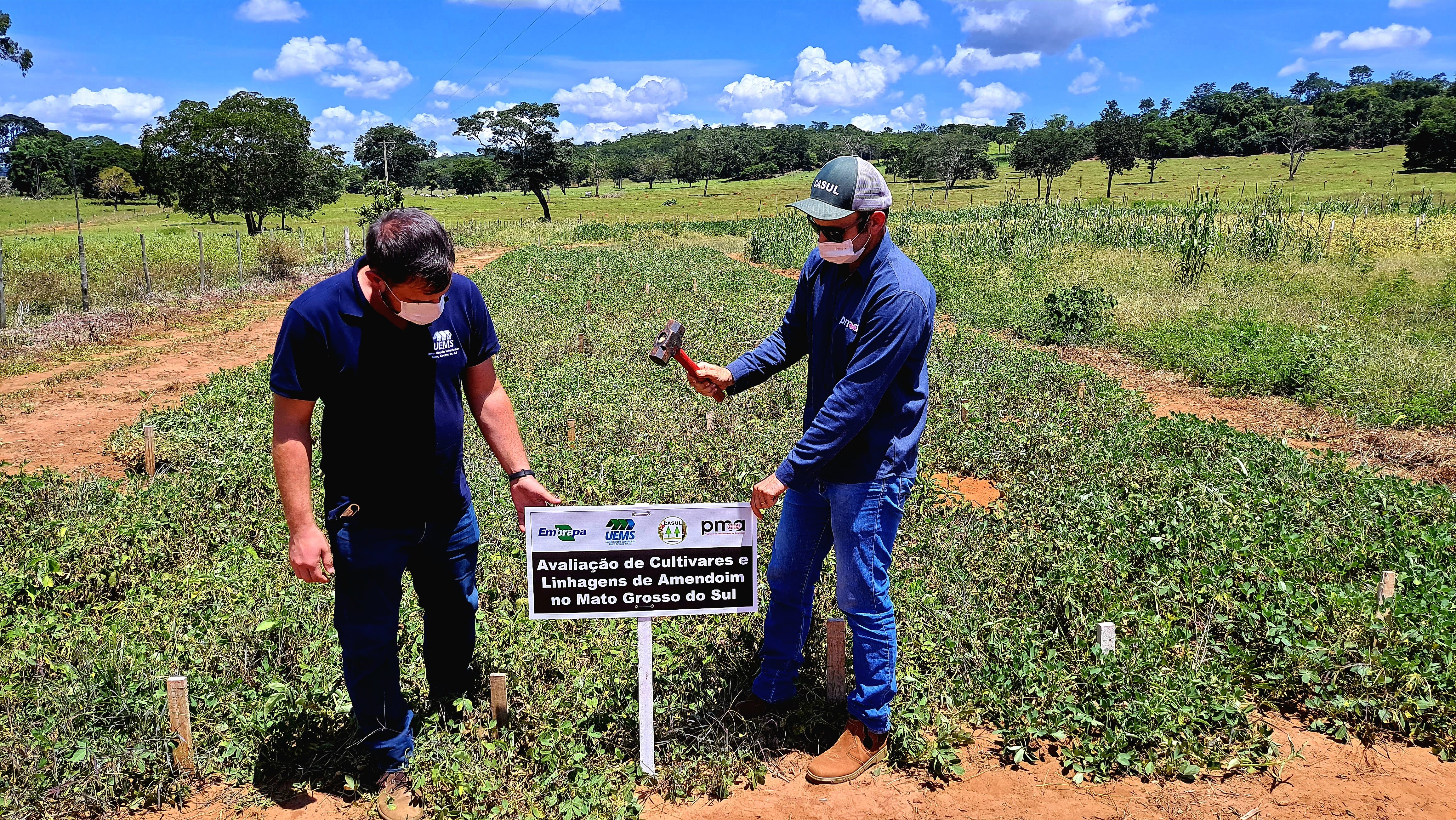Agronomic characteristics of peanut genotypes in the Bolsão Sul-Matogrossense region
DOI:
https://doi.org/10.52755/sas.v3i2.184Keywords:
Arachis hypogaea L., Improvement Program, Cultivars, ProductivityAbstract
In recent years, agronomic validation studies have been carried out in the state of Mato Grosso do Sul. Therefore, the present study aimed to evaluate the agronomic performance of peanut genotypes in the edaphoclimatic conditions of the Bolsão Sul-Matogrossense Region. The experiment was carried out at the experimental farm of the State University of Mato Grosso do Sul - UEMS, located in the municipality of Cassilândia – MS, in the agricultural year 2021/22. The experimental design used was in randomized blocks, with four replications. The treatments were ten lowland peanut genotypes (BRS 423 OL, Granoleico, 1253 OL, 1876 OL, 1944 OL, 2010 OL, 2055 OL, 2110 OL, 2471 OL and 2259 OL). The plots consisted of two lines of three meters in length, with a spacing of 0.90 m and a useful area for evaluation of 5.4 m² per plot. The variables evaluated were Late leaf spot severity, 100-grain mass and pod yield. The 2010 OL strain had the highest mass of 100 grains, in addition to being among the most productive, together with 1253 OL and the cultivar BRS 423 OL, both with yields above 5,500 kg ha-1, demonstrating a possible agronomic adaptation to the conditions edaphoclimatic conditions in the Bolsão Sul-Matogrossense region. This study becomes essential for the validation of agronomic characteristics and recognition of peanut behavior in different soil and climate conditions in Brazil.
Downloads

Downloads
Published
How to Cite
Issue
Section
License
Copyright (c) 2022 Cassio de Castro Seron, Eduardo Pradi Vendruscolo, Jair Heuert, Maxuel Fellipe Nunes Xavier, Murilo Battistuzzi Martins, Mennes Vieira da Silva, Tiago Zoz

This work is licensed under a Creative Commons Attribution-NonCommercial-ShareAlike 4.0 International License.
Autores concordam com os seguintes termos:
a) Os autores mantêm os direitos autorais e concedem à revista o direito de primeira publicação, com o trabalho simultaneamente licenciado sob a LicençaAttribution-NonCommercial-ShareAlike 4.0 International, que permite o compartilhamento do trabalho com reconhecimento da autoria e publicação inicial na Revista SAS. A licença permite o uso, a distribuição e a reprodução irrestrita, em qualquer meio, desde que devidamente citada a fonte. Essa licença permite também que outros remixem, adaptem e criem a partir do seu trabalho para fins não comerciais, desde que atribuam a você o devido crédito e que licenciem as novas criações sob termos idênticos.
b) Não cabe aos autores compensação financeira a qualquer título, por artigos ou resenhas publicados na South American Sciences.
c) Os conceitos expressos nos artigos publicados na South American Sciences são de inteira responsabilidade de seus autores.








